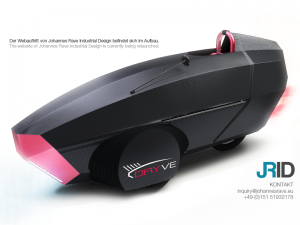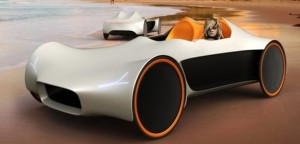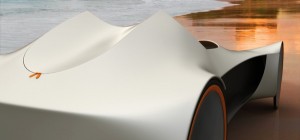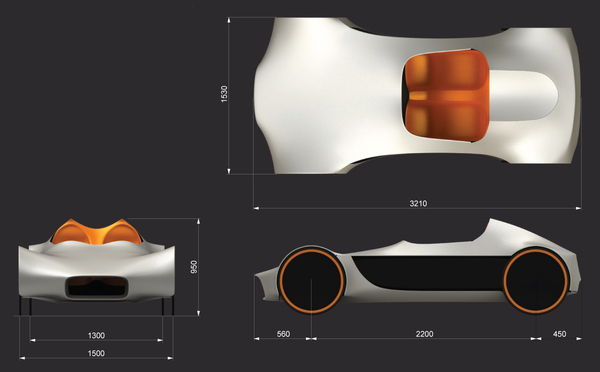Following on from the Softshell Velomobile Recumbent Gallery also mentioned that AZUB were developing a velomobile. They then referred the reader to AZUB’s 2012 catalogue which is available online through ISSUU.

The catalogue dedicates two pages, 52 and 53, to the Dryve velomobile. The work has been done in conjunction with a German industrial designer, Johannes Rave. For those who take issue with ISSUU, and I find it painfully slow on older PCs, the english text is quoted below:
Dryve – AZUB project of fabric fairing for recumbent trikes
AZUB Dryve is a project of mixed alu/fabric fairing designed for all three models of AZUB trikes. There are a few goals we wanted to reach:
- Quite light construction of a fully faired trike which can be used in different types of weather with the rider still comfortable inside.
- Using a fabric which can be stretched a bit in the way to use its properties (covered wheels, unusual entrance etc.)
- Affordable price which cannot be obviously reached by construction from Composite.
- Good looking – a bit car-like-style design with focus on function and practical daily use allowing to transport larger luggage and/or hauling a trailer. The aerodynamic shape is not our primary goal as the construction from fabric cannot really be very aerodynamic.
- Possibility of easy assembly of electric motor.
- Possibiiity of riding the trike without fairing in the hot months of the year.
- Small size for transport from AZUB to customer so the shipping price is not sky high like when delivering a composite body which is huge and has to be protected a lot.
We were dreaming about such a machine for couple of years and then we were contacted by a German student of industrial design from The University in Pforzhelm, Johannes Rave who wanted to design such a fairing for his diploma work. His timing was really perfect and he had at least s.ome experience with this project from some of his seminar work so we started to work together and after some months the project took shape and the very first prototype was made.
We just started to test it (spring 2012) and we already know there are tons of problems which have to be solved from absolutely new ideas lhat have never been tested before. We are very optimistic and are looking forward to new developments. The final product should be introduced during 2013.
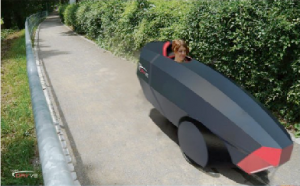 I must say I admire wordplay in the name and logo they have chosen. AZUB go on to briefly profile Johannes and point the reader to his website.
I must say I admire wordplay in the name and logo they have chosen. AZUB go on to briefly profile Johannes and point the reader to his website.
Johannes Rave, born 1985, is a German industrial designer who worked together with AZUB on the DRYVE as his final project in summer 2011. He is living in Pforzheim. Germany, where he works on projects for a sustainable future.
Johannes Rave,
At the time of writing his website is pending a relaunch. Meanwhile his front page presents the following nice rendering.